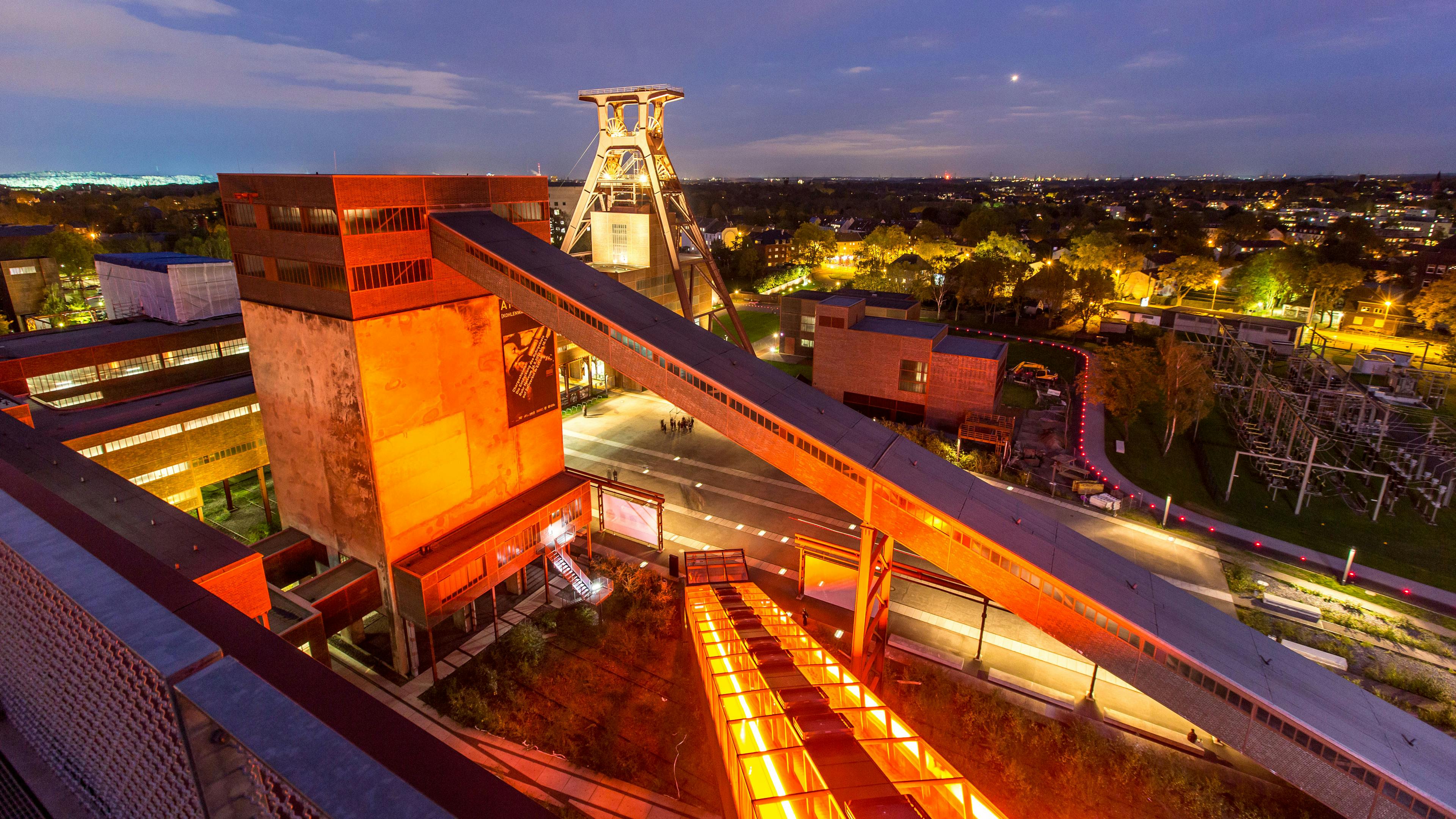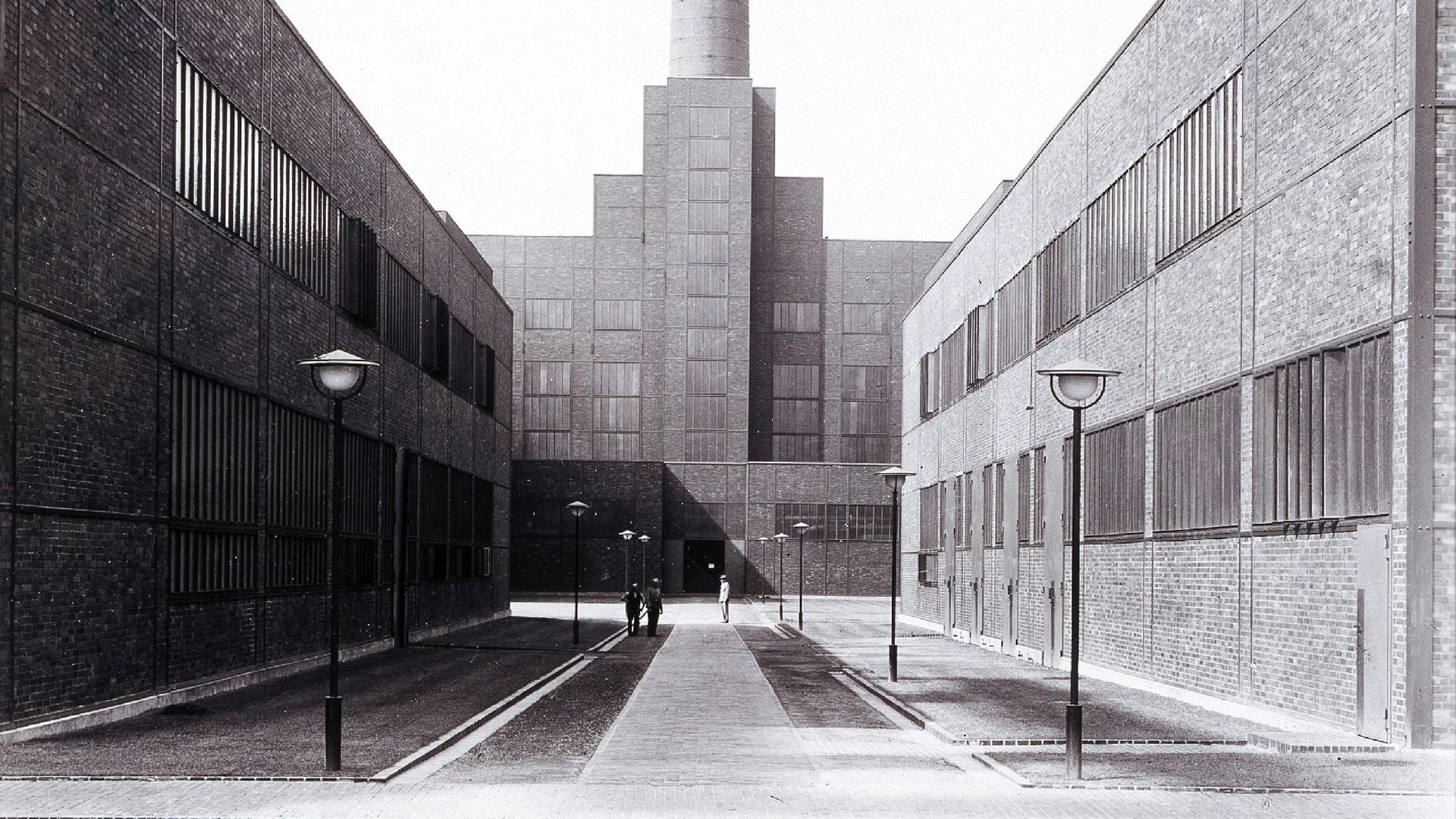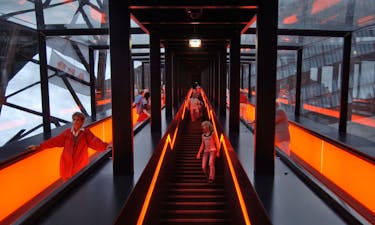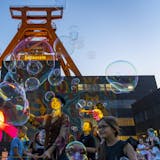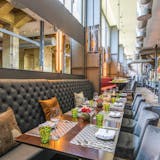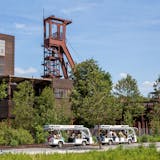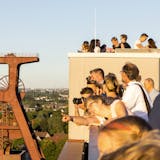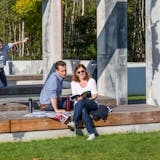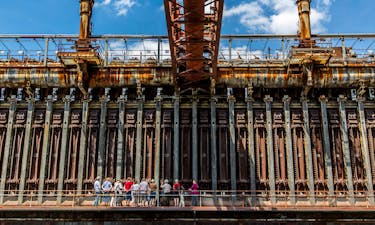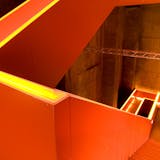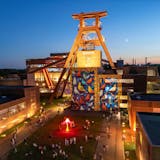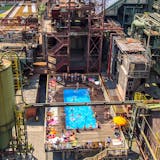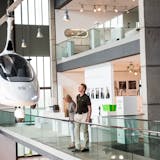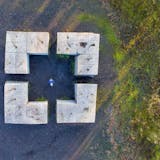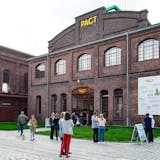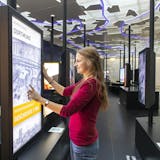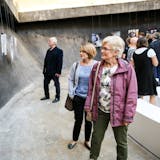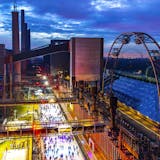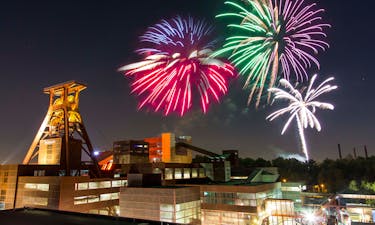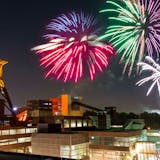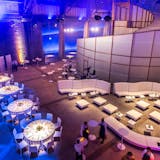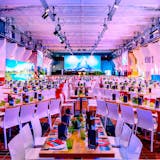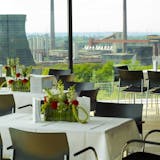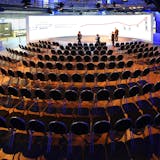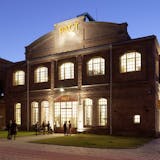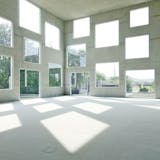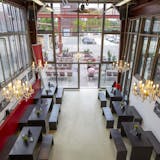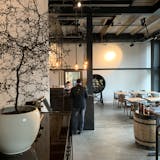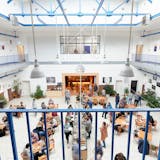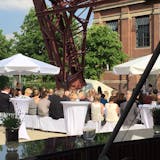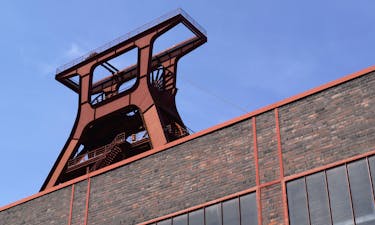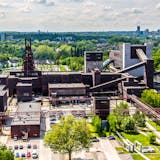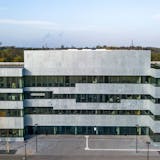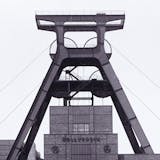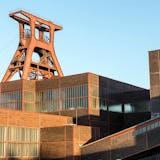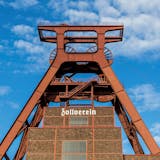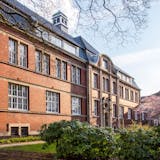Beginning
1847 Franz Haniel has the first shaft sunk.
1851 The first coal is extracted. Zollverein is the first underground coal mine of the region.
Extension
1900 5,355 miners work in three shaft sites altogether. Zollverein is one of the largest collieries in the Ruhr Area.
1926 Zollverein becomes a coal mine of Vereinigte Stahlwerke AG, the second largest steel group worldwide. Vereinigte Stahlwerke AG decides to construct a central shaft at Zollverein.
Rationalisation
1932 Mining operations at Zollverein Shaft XII commence on 1 February, the then largest coal mining facility in the world. The architects are Fritz Schupp and Martin Kremmer. Among experts Shaft XII is considered a technical masterpiece: with a daily output of 12,000 net tons of pure hard coal, the facility produces the threeto fourfold quantity of an average colliery in the Ruhr Area. For three decades, the architecture of the coal mine is exemplary for industrial buildings in the Ruhr Area.
1961 With spatial and functional connection to Shaft XII, the Zollverein Coking Plant is put into operation. After another expansion in the 1970s, it ranks among the largest and most modern coking plants in Europe
Structural change
1986 On 23 December, the Zollverein Shaft Sites are closed down; the previous week, Shaft XII is put under a preservation order.
1990 The refurbishment and conversion measures for turning Zollverein Shaft XII into an international centre for culture are commenced.
1993 On 30 June, the Zollverein Coking Plant is decommissioned, too. 1996 Casino Zollverein is opened in the former compressor hall.
1997 Design Zentrum Nordrhein Westfalen moves into the boiler house, which has been converted by Lord Norman Foster. Today, it accommodates the red dot design museum.
1998 Refurbishment works at the Zollverein Coking Plant are commenced. Zollverein Foundation (Stiftung Zollverein) is established. Since 2008, it pools all activities at the World Heritage Site.
2001 The Zollverein Shaft Sites XII and 1/2/8 as well as the Zollverein Coking Plant are declared a UNESCO World Heritage Site. The development of the premises on the basis of the master and management plan by Rem Koolhaas starts that same year.
2003 The extensive refurbishment of the coal washery begins. The architects responsible are Rem Koolhaas’ Office for Metropolitan Architecture from Rotterdam as well as Böll and Krabel from Essen.
2006 The SANAA Building is a spectacular new addition. Companies from the creative industry establish themselves at “designstadt No1” at Shaft 1/2/8.
2010 The Ruhr Area is European Capital of Culture, Zollverein is right in the middle of it as an international centre for culture and the creative industry. Ruhr Museum, the Ruhr.Visitorcenter Essen, the Portal of Industrial Heritage, and the new Denkmalpfad Zollverein (Monument Path Zollverein) are opened.
Zollverein UNESCO World Heritage Site is considered a magnet for visitors to the Ruhr Metropolis – from here, a whole region becomes accessible. As the centre of the “Route of Industrial Heritage” it fascinates more than 1.5 million visitors from Germany and abroad every year.
